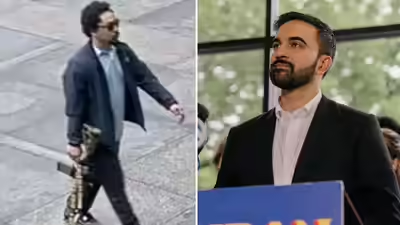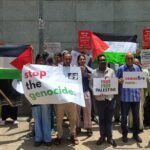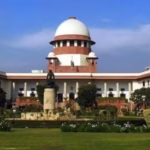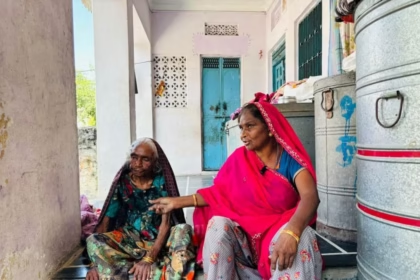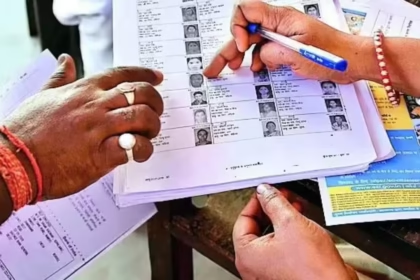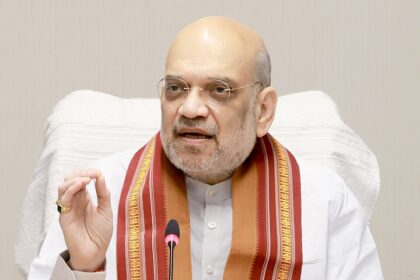A City Shaken, A Leader Responds — Zohran Mamdani’s Voice in the Aftermath of the Manhattan Office Shooting
On a humid July morning, Manhattan—a city known for its towering ambition, cultural dynamism, and round-the-clock energy—was jolted into silence by the chilling echo of gunfire. What was meant to be just another weekday in the borough quickly turned into a scene of horror, confusion, and heartbreak. Inside an otherwise quiet office space, a shooter opened fire, sending shockwaves through a city already grappling with the weight of rising violence in public spaces.
Among the many voices to emerge in the aftermath was that of Zohran Mamdani, an Indian-origin state assembly member, community organizer, and progressive political figure widely seen as a frontrunner for the next mayoral race in New York City. His heartfelt and immediate reaction to the shooting, shared across press statements and social media platforms, stood out for its sincerity, gravity, and humanity.
“Heartbroken doesn’t begin to describe what I feel today,” Mamdani posted. “To those injured, to those who fled in fear, to those who will carry the trauma of this moment long after the sirens fade—I stand with you.”
But his message didn’t stop there. With clarity and resolve, Mamdani also extended his gratitude to the city’s first responders, including NYPD officers, paramedics, and fire personnel, who moved swiftly to evacuate the building, stabilize victims, and neutralize the threat. He emphasized their courage and the importance of community resilience in the face of such incidents.
This article begins a deep, 20-part exploration of this event—not just the tragedy itself, but what it symbolizes about the state of urban safety, public leadership, and political consciousness in modern America. We begin here, with the moment of crisis and Mamdani’s emerging role as a leader of substance in a city under pressure.
A Familiar Tragedy in an Unfamiliar Setting
Shootings in the U.S. are sadly no longer “rare” news stories. Yet when gun violence invades the polished, supposedly secure high-rises of Midtown Manhattan, it stirs a different kind of national anxiety. New York is seen by many as a fortress of civilization—a place where commerce, policy, art, and multiculturalism coexist in relative balance. That illusion cracked, if only briefly, in the moments that followed the attack.
While law enforcement agencies have not yet disclosed the full details of the shooter’s motive, early reports suggest that the incident was not connected to gang violence or terrorism, but rather a targeted act of aggression, possibly linked to personal or workplace grievances. Regardless, the consequences were immediate—both in terms of physical casualties and psychological trauma.
For someone like Mamdani—who has long spoken out against both gun violence and the systemic failures that allow it to persist—this was not just another tragic headline. It was a call to action.
Zohran Mamdani: A Political Figure with Grassroots Roots
To understand why Mamdani’s voice in this crisis matters, one must understand who he is.
Born in Kampala, Uganda, to Indian parents, and raised in New York City, Zohran Kwame Mamdani is not your typical American politician. He is an artist-turned-lawmaker, a child of immigrants, and a Democratic Socialist who champions causes often sidelined in mainstream political discourse—affordable housing, racial justice, worker rights, and police reform.
He represents the 36th District in the New York State Assembly, covering neighborhoods in Queens such as Astoria. But in recent months, his name has been circulating far beyond his district. Political insiders, media commentators, and activist groups are increasingly pointing to Mamdani as a potential mayoral contender, particularly for a progressive electorate that feels alienated by corporate-style governance.
So when he chose to speak out after the Manhattan shooting—not with political calculation but with compassion—it struck a chord.
“I’ve seen firsthand the pain our communities endure after incidents like these,” he said in a follow-up interview. “There’s always a rush to politicize, to debate the laws, but let’s not forget the human beings who just had their lives changed forever.”
Leadership in Crisis: Language That Moves People
What distinguishes Mamdani’s response is not just what he said, but how he said it. In contrast to sterile press releases or rehearsed soundbites often issued by public figures, Mamdani’s reaction carried the tone of someone present in the moment—aware of both the emotional weight and the civic responsibility of his words.
He acknowledged the emergency, honored the victims, praised the city’s responders, and simultaneously held space for broader questions—about mental health, gun access, and workplace stressors.
His comments didn’t sound like someone looking for approval—they sounded like someone asking the public to feel together, to pause and reflect before descending into the usual cycle of outrage and forgetfulness.
It’s this emotional intelligence that has won Mamdani growing trust across communities, particularly among young, urban, and minority voters.
First Responders: The Unsung Heroes of the Day
While the shooting has understandably dominated headlines, it’s equally important to recognize the swift and coordinated response by first responders, which prevented a much greater tragedy.
Emergency calls were made at approximately 9:48 a.m., and within minutes, NYPD and FDNY units were on the scene. Police quickly secured the perimeter and engaged the shooter while paramedics treated the injured. Their efficiency was evident in the fact that no further casualties occurred despite the building being densely occupied.
Mamdani made a point of highlighting this.
“We are all lucky to live in a city where women and men in uniform don’t hesitate to put themselves in harm’s way to save others,” he stated. “My gratitude goes to every responder who showed up not just with courage, but with care.”
His tribute was a politically savvy yet emotionally grounded gesture, signaling his respect for public service—something that may appeal even to centrist voters traditionally skeptical of left-wing candidates.
Media, Missteps, and the Power of Precision
As with most breaking news events, the initial coverage of the shooting was chaotic. Conflicting reports, unverified social media videos, and speculative commentary flooded timelines and newsfeeds. Mamdani, notably, refrained from jumping into speculation. He waited for facts, relied on verified sources, and chose his words with care.
This has become increasingly rare in a time when many politicians rush to be first instead of right. Mamdani’s deliberate approach reflects a growing understanding among younger leaders: that in moments of panic, credibility is currency.
Media analysts later praised his measured tone, contrasting it with several other public figures who shared incorrect or exaggerated information. In doing so, Mamdani preserved both his moral clarity and civic credibility.
A Defining Moment in a Fractured City
The Manhattan office shooting was tragic, sudden, and disorienting—but in its wake, it revealed the faces of leadership and resilience. Among the responders and survivors, and among the voices speaking out, Zohran Mamdani emerged as a figure of calm, compassion, and resolve.
The Evolution of Violence in Urban America
America’s complex and often tragic relationship with gun violence is no longer limited to “bad neighborhoods” or late-night alleyways. In the past two decades, the locations of mass shootings have spanned the unthinkable: churches, grocery stores, schools, movie theaters, concerts, and office buildings. No space today feels immune, and that terrifying fact has become a hallmark of the American experience.
While the nation debates constitutional interpretations of the Second Amendment, the real-life impact plays out daily in local communities. For Manhattan—a global symbol of affluence, intellect, and multiculturalism—the invasion of such violence feels like a crack in the social armor.
Gun Violence in Manhattan: The Data Tells a Story
Although New York City has some of the strictest gun laws in the country, gun-related incidents have still surged in recent years. According to NYPD records and annual city crime reports:
- In 2022, Manhattan reported over 300 gun-related crimes, including both shootings and armed robberies.
- By the end of 2024, that number had climbed by 12%, with increasing cases linked to domestic disputes and workplace violence.
- Most alarmingly, between 2020–2025, there has been a 27% uptick in shootings that took place in business districts, including financial and tech offices—locations once assumed to be safe.
This statistical trend shows a pivot in both the geography and psychology of gun violence—a shift that caught the attention of Mamdani long before the recent tragedy.
Zohran Mamdani’s Longstanding Stance on Gun Control
Before the events of July 2025, Zohran Mamdani was already recognized for his firm advocacy on gun control and community safety reform. As a State Assembly member, he co-sponsored the Safe Workspaces Bill in 2023, which aimed to enforce tighter security regulations in private offices and coworking spaces.
He has also been a vocal supporter of statewide mental health intervention programs, believing that many acts of mass violence stem not from ideological extremism, but from untreated trauma and isolation.
Mamdani’s past interviews and floor speeches paint a clear picture: he does not see gun violence as a problem with one solution, but rather as a symptom of a fractured system—one that needs to be addressed through a web of education, regulation, mental healthcare, and economic justice.
How the System Fails Before the First Shot
In a press statement following the Manhattan shooting, Mamdani said something that resonated with many:
“Gun violence doesn’t begin when a trigger is pulled—it begins in silence, in denial, in all the times we’ve chosen to look away.”
This line encapsulates a growing awareness among progressive leaders that prevention isn’t only about policing, but about the early warning signs society tends to ignore:
- Employers dismissing reports of harassment or bullying.
- Family members avoiding conversations about mental instability.
- Political leaders funding carceral systems over community-based care.
Mamdani has argued repeatedly that a more compassionate and preemptive approach to policy—rather than a reactive one—is the only long-term antidote to violence in American society.
Office Spaces: The New Frontline
The idea that workplaces have become sites of violence is deeply disturbing but no longer new. In fact, research by the Bureau of Labor Statistics reveals that workplace shootings now account for roughly 15% of all mass shooting events in the U.S.
The Manhattan shooting fits into a pattern of recent incidents where internal conflict, professional burnout, or sudden termination led to someone bringing violence to their place of employment. And in a city like New York, where pressures of ambition and survival are high, the emotional volatility can be dangerously amplified.
Mamdani’s efforts to mandate security audits and mental health programs in large offices were seen as forward-thinking. Sadly, the latest attack only underscores the urgency of those proposals.
The Mental Health Gap in Urban Centers
New York City, despite being a world leader in medicine and technology, still faces a significant shortage in accessible mental health services, especially for:
- Low-income workers.
- First-generation immigrants.
- Freelancers and gig workers who fall outside traditional insurance systems.
Zohran Mamdani has continually flagged this issue as a blind spot in urban governance.
In a recent interview, he said:
“We can’t pretend to care about safety if we underfund mental healthcare, stigmatize therapy, and wait for violence before we act. Preventive care isn’t just a health issue—it’s a public safety strategy.”
He’s not alone in this view. Multiple public health reports from Columbia University and NYU have shown direct correlations between poor mental healthcare access and the likelihood of interpersonal violence—especially in high-stress environments like offices or crowded city areas.
Public Reactions: Trauma, Rage, and Reflection
The Manhattan shooting sent ripples through more than just the political community—it deeply impacted ordinary citizens, office workers, and families living nearby. People on social media spoke of panic attacks, delayed commutes, empty desks, and sleepless nights in the days that followed.
One viral comment on Twitter read:
“I used to work in that building. Now I wonder if any office is safe anymore.”
Another said:
“I don’t want ‘thoughts and prayers.’ I want policies.”
Mamdani echoed those feelings in his speeches—not dismissing emotion, but guiding it toward purpose. He has encouraged public forums, neighborhood assemblies, and trauma response groups to keep the conversation going, even as national media moves on.
The Political Response Beyond Mamdani
Though Mamdani has received attention for his authenticity and proactive stance, he is not alone in the push for reform.
City Councilwoman Alexa Santos proposed a “Workplace Safety and Wellness Act”, while U.S. Senator Kirsten Gillibrand has renewed her call for federal funding of office safety upgrades in metropolitan areas.
However, Mamdani’s grassroots approach—focused less on metal detectors and more on human needs—stands out in a field where security is often treated like a hardware problem rather than a cultural one.
From Tragedy to Transformation
Gun violence in Manhattan is not just a law enforcement issue—it is a mirror reflecting the vulnerabilities in how America structures its cities, its workspaces, and its mental health systems.
Through the lens of the recent shooting, and Zohran Mamdani’s engaged and emotional response, we begin to understand that true safety cannot be built with fear or fences—it must be built with care, trust, and structural justice.
Zohran Mamdani — The Personal Is Political
To understand the depth of Zohran Mamdani’s response to the Manhattan office shooting, one must first understand him. Not just the public figure, not just the politician—but the man behind the microphone. This part of our series turns inward, tracing the origins of Mamdani’s worldview, the experiences that shaped his convictions, and the identity he carries into every policy decision, every press statement, and every act of public service.
Roots in Revolution: An Unconventional Upbringing
Zohran Mamdani was born in Kampala, Uganda, but his life soon intertwined with the city he now calls home—New York. He was raised in an environment of art, activism, and displacement. His father, Mahmood Mamdani, is a renowned academic and political theorist. His mother, Mira Nair, is an award-winning filmmaker best known for works like Salaam Bombay! and The Namesake. Their household was anything but ordinary. It was intellectually charged, politically aware, and globally connected.
Growing up at the intersection of African, South Asian, and American cultures, Mamdani was uniquely positioned to see the world not as a set of borders but as a mosaic of narratives—each shaped by inequality, resistance, and hope.
The Immigrant Lens: Living Between Two Worlds
In interviews, Mamdani often refers to his “immigrant lens”—a way of seeing American politics not through the privilege of inheritance but through the urgency of arrival. His family, like many others, navigated visas, identity checks, and unspoken suspicions. But they also discovered a country brimming with opportunities—and contradictions.
Zohran’s political voice matured not just from books or lectures, but from watching his parents balance celebrated intellectualism with the quiet tensions of being ‘othered’ in a post-9/11 America. These lived experiences became the foundation of his political philosophy: one rooted in justice, representation, and the refusal to be invisible.
Entry into Public Life: From Organizer to Assembly Member
Before running for office, Mamdani worked as a housing counselor with immigrant communities in Queens. There, he saw firsthand the bureaucratic neglect and systemic racism baked into urban governance. His constituents were often denied basic housing rights, tricked by landlords, or lost in legal paperwork they couldn’t read.
That was the turning point.
He joined grassroots movements, knocking on doors not for votes but for tenant rights, eviction defense, and language access programs. This period marked his transition from activist to organizer, and eventually to elected official.
In 2020, at just 29 years old, he was elected to the New York State Assembly from District 36, representing Astoria, Queens—a diverse, working-class neighborhood where Arabic, Bengali, Spanish, and Greek are spoken as often as English.
Politics of Principle: Why Mamdani Stands Out
In a political era dominated by soundbites and corporate donors, Mamdani’s presence is striking for two reasons:
- He speaks in systems, not slogans. Whether discussing police violence, housing, or mental health, his framing is always structural, never surface-level. He emphasizes root causes—colonialism, capitalism, patriarchy—not just symptoms.
- He shows up. During crises, Mamdani doesn’t retreat behind press releases. Whether it’s a subway protest, a food pantry in Queens, or—most recently—the aftermath of the Manhattan office shooting, he is physically present. To his constituents, this matters deeply.
The Muslim Identity: Navigating Faith and Politics
As one of the few openly Muslim elected officials in New York State, Mamdani carries his faith not as a shield, but as a source of clarity. In speeches, he quotes the Quran. In debates, he channels the ethics of justice, compassion, and collective responsibility rooted in Islam.
He has faced Islamophobia—both overt and coded. Opponents have tried to paint him as “radical,” and his Palestinian solidarity has drawn ire from conservative circles. But rather than back down, he’s leaned in—with statements like:
“My existence in this office is already a disruption to centuries of exclusion.”
Following the Manhattan office shooting, Mamdani’s spiritual grounding was evident in his tone. His grief was communal, his gratitude to first responders sincere, and his call to action firm but compassionate. It wasn’t just politics—it was personal.
The Role of Artists in Shaping a Politician’s Voice
With a mother like Mira Nair, creativity was always part of Zohran Mamdani’s vocabulary. He has dabbled in rap and spoken word, often using performance as a form of political education. In his younger years, he performed under the stage name Mr. Cardamom—a nod to his South Asian roots.
In his music, he addressed racism, gentrification, and diaspora identity. Those themes would later evolve into policy positions. In many ways, Mamdani is a product of art meeting activism, where storytelling fuels movement-building.
This background made his response to the shooting even more resonant. His words weren’t bureaucratic—they were narrative-driven. He spoke of lives lost, trauma endured, and the city’s need to feel human again, not just secure.
Criticism and Courage: A Life in Public Scrutiny
No political career is without opposition. Mamdani has been criticized for being “too radical,” “too ideological,” or “too anti-establishment.” His support for abolishing ICE, defunding police budgets, and divesting from Israeli military contracts have put him at odds with more centrist Democrats.
Yet, he doesn’t flinch.
His ability to remain transparent, articulate, and unapologetically leftist has earned him fierce loyalty from progressives and skepticism from moderates. But in times of crisis—like the Manhattan shooting—even his critics have acknowledged the maturity and humanity in his approach.
A Leadership Model for the Next Generation
At a time when politics is often performative, Zohran Mamdani models a different path: one where empathy is not weakness but strength, where identity isn’t a liability but a source of power.
For young people of color, immigrants, and Muslims in New York and beyond, his presence is more than symbolic. It’s instructional. It shows that leadership doesn’t have to come from elite circles or sanitized narratives. It can be messy, vulnerable, and real.
Also Read : From Bombay HC Order to Nehru Place Protest Disruption: How Free Speech Is Being Selectively Silenced


